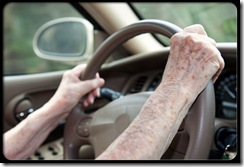 Imagine being a prisoner in your own home, unable to visit friends, make it to doctor appointments, eat out, attend cultural events or shop for groceries unless someone is available to drive you.
Imagine being a prisoner in your own home, unable to visit friends, make it to doctor appointments, eat out, attend cultural events or shop for groceries unless someone is available to drive you.
After an exodus to the suburbs in the 1950s, operating a car became a necessity for getting to work, maintaining our daily lives and connecting with friends and family.
But as we get older, driving can become a challenge.
What circumstances might make driving no longer a good choice for a senior living in Thousand Oaks?
Aside from a major health setback such as a stroke or a broken hip, other consequences of aging can make driving difficult for seniors: Low vision, night blindness or loss of peripheral vision; difficulty walking long distances in parking lots or carrying heavy packages; joint stiffness in hands, legs and neck.
Seniors may also fear getting lost as new streets and routes are created.
Socially responsible seniors accept their challenges and voluntarily give up the keys to their cars, potentially saving other lives as well as their own.
It is up to the community to thank these seniors by providing a means for them to get around.
Transportation usually tops the list of unmet needs of seniors in local aging agency surveys.
While public transportation would seem to be an answer to the problem, only 6.7 percent of Americans age 65 and older ride the bus, according to the American Public Transit Association.
Why aren’t more seniors taking buses? Public transit routes and stops sometimes aren’t flexible enough. Getting to the bus stop or stepping on and off the bus can be problematic.
Keeping seniors involved in the community once they stop driving often means providing door-to-door transportation in a private vehicle.
A number of communities have established organization of volunteers who offer seniors transportation within their own neighborhood, or in their religious or community group.
In some towns, local businesses sponsor a nonprofit door to door senior transportation service for older adults and the visually impaired.
And in some neighborhoods, volunteers work with local grocery stores to offer seniors rides to buy groceries. The volunteers will even carry purchases to the senior’s kitchen.
According to Susan White Wood of the Ventura County Area Agency on Aging, the agency works to ensure all seniors are able to get where they need to go: It promotes safety programs for older adults who still drive, and coordinates other options such as public transportation, trip planning and mobility training, or door-to-door transportation, depending on seniors’ needs.
Establishing a better senior transportation network is more than a good cause; it’s a necessary one. We owe our community seniors better alternatives to driving that preserve their independence while ensuring our roads are safe and our community vibrant.


